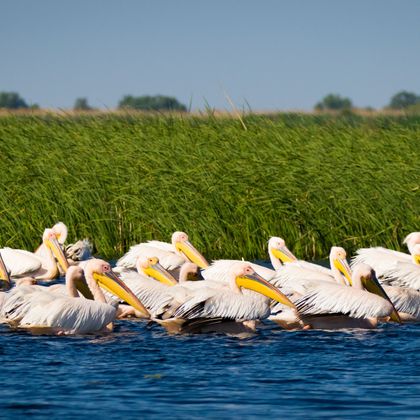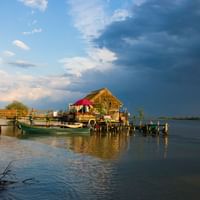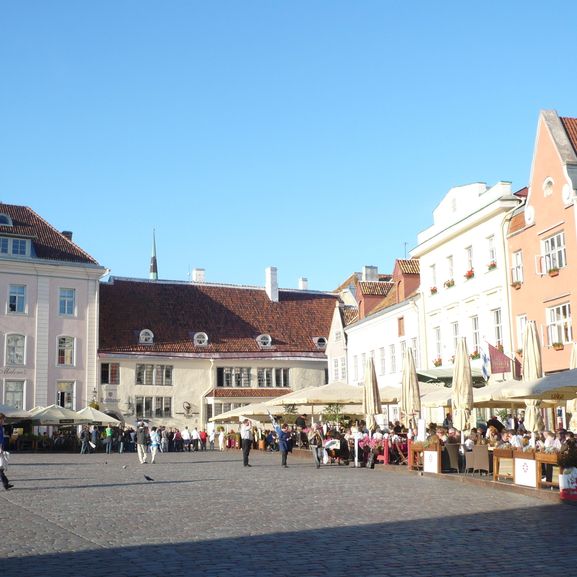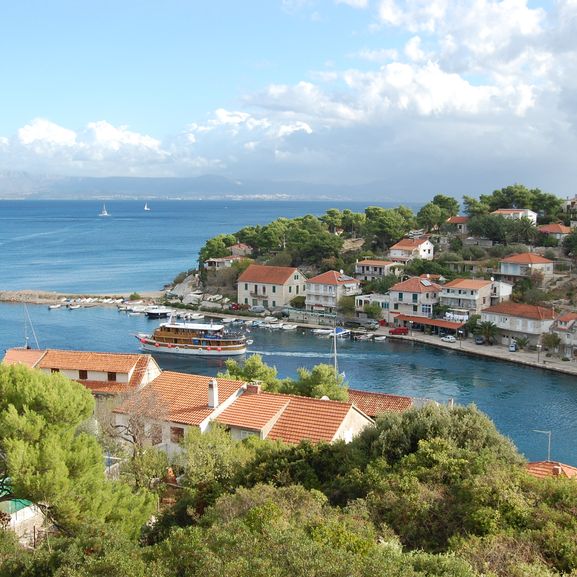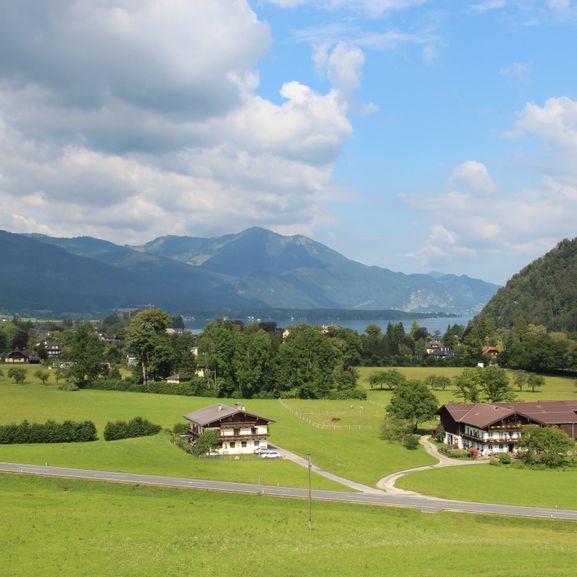The magic of untouched nature
Cycling tours in Romania
Discover Romania on a river cruise by bike & ship: The country, unknown to many, has one of the last natural paradises in Europe. The Danube Delta is part of the UNESCO World Heritage Site and is home to the largest area of reeds in the world. This fascinating river delta stretches only a little north of the sun-drenched Black Sea coast. With its 5,600 sq km, the delta is an ecological natural landscape par excellence. A seemingly endless labyrinth of river arms, side arms, oxbow lakes, lakes and reed beds is home to more than 300 bird species and is the most important habitat of all for Dalmatian pelicans and dwarf cormorants. Only those who have heard the nocturnal concert of frogs and toads and the screeching of the heron and cormorant colonies or experienced the migration of geese in the winter half-year can appreciate the magic of this endless marshland.
Wonderful cycling
In Romania you cycle partly on paved roads, partly on unpaved, sandy or gravel paths. The routes run flat or slightly hilly through wonderfully bikeable landscapes and great nature.

Old and new - monasteries and contrasts
Again and again in the Danube Delta you will come across the white and blue thatched roof houses. Tulcea, Castrum Aegyssus, situated on seven hills, is one of the oldest settlements in Romania and dates back to around 2900-2200 BC. It is brimming with monasteries: Celic-Dere, Cocos and Saon are some of them. In Celic-Dere there is a collection of ancient ecclesiastical art, for example documents in Turkish, Arabic and Persian and an icon of the Mother of God from 1600. The monastery church of Cocos bears three towers crowned with domes in Byzantine style and contains a richly decorated iconostasis. At Enisala you will encounter the 14th century castle ruins of the same name. From the citadel there are wide views over lakes, reeds and countryside.
In Bucharest, the "Paris of the East", you will enjoy the historic old town district around the Curtea Veche, the old princely court of Vlad Tepes. Also worth seeing are the Strada Lipscani, named after Leipzig merchants, which is now a kind of trendy and tourist district, and the adjacent guild streets of blacksmiths and hatters. The Palat ul Parlamentului, Palace of Parliament, was built by Ceaucescu. It is one of the largest buildings in Europe. In the north of the city, you will find impressive buildings and chic boutiques in Calea Floreasca.

Music and dance
Music and dance are particularly important in Romania. Both were subject to many influences from Hungary, the Ottoman Empire and the Balkans. To this day, the country has preserved a rich folklore scene. The dance called Căluşari is part of the UNESCO World Heritage. You might hear a doina, an improvised ballad, a kink-necked lute called a cobsă, or a beak flute. But Romania is also the land of classical music. Bucharest hosts the "George Enescu" classical music festival. Jazz festivals are held in Bucharest and Sibiu, as well as many medieval festivals and in the Danube Delta the "Anonimul" Film Festival.

Cabbage rolls and fish soup
Romanian dishes are often hearty. There are many different variations of them and you could call them Romanian national dishes. Mici, the little ones, are called the well-seasoned Romanian minced meat rolls made of ground beef or mixed ground meat with garlic or mudeij, garlic sauce. Romanian dishes are often accompanied by mămăligă , a type of polenta, or bulz, dumplings made from corn semolina. Cheese is widespread. It is available from cow's, goat's or sheep's milk. Try, for example, the Urda, Caș or Telemea varieties. In the Danube Delta, of course, there is plenty of fish! Enjoy the fish soup Ciorba de peste. The Danube sturgeon is famous for its black caviar. There is even a Danube herring.

Huge natural wonders
The Danube's estuary into the Black Sea forms a vast 5,800 square kilometer delta of countless watercourses, ramifications and oxbows, lagoons, lakes and lily-lined channels. With its riparian forests, reed beds, floating islands, as well as drylands and dunes, it is a refuge for numerous species. This secluded region on the edge of Europe is the largest wetland in Europe and is home to approximately 5,200 species of animals and plants. In this biosphere reserve you can discover the largest European colony of the pink pelican and the second largest of the ruffed pelican, the red-necked goose, the lesser cormorant or the great beluga sturgeon. - To understand more and go deeper visit the Danube Delta Ecological Center with the largest aquarium in Eastern Europe.
On the other hand, large areas of steppe vegetation are protected in the Mäcin Mountains National Park near Tulcea. Romania is not stingy with natural wonders and will overwhelm you.

